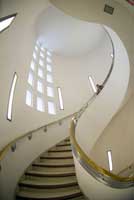- Campuses :
- Twin Cities
- Crookston
- Duluth
- Morris
- Rochester
- Other Locations

center for writing
writing.umn.edu
Publications abstract: Decision Cases for Writing Across the Curriculum

Ann Hill Duin, Rhetoric
Steve R. Simmons, Agronomy and Plant Genetics
Elizabeth Lammers, Research Assistant
While case studies have existed in formal business education since the early 20th century, the case method has seen little application to writing-across-the-curriculum (WAC) efforts. The goal of this project was to provide a detailed process for developing and implementing decision cases for WAC efforts as well as data on their effectiveness in a scientific course. College students read decision cases, developed written arguments in support of their decisions, and discussed the cases with high school students via a desktop video-conferencing system.
During fall quarter 1992 we studied the decision-case development process by collaborating to complete two new decision cases for use in university and secondary classrooms. We kept detailed notes regarding our design process, and we compared our process to Stolovitch and Keeps' (1991) process. During winter quarter1993, we investigated the use of four decision cases with 25 students in AnPl 3010: Environment and World Food Production. For two of the cases, we did a content analysis of students' concept maps and case responses. For the other two cases, we videotaped the conferences and analyzed them according to Daft and Lengel's (1986) framework for studying media richness theory. We also collected questionnaire data regarding the students' understanding and attitude toward writing, the environment, and decision cases in general as well as the students' attitudes toward discussing the cases with high school students.
We learned that constructing decision cases is a complex process involving multiple audiences and disciplines. Students indicated that their knowledge about the environment and agro-ecosystems increased significantly as a result of the course, although they did not necessarily attribute this increase to their work with decision cases and writing. The instructor's expectation for good writing and his comments on students' case responses overlapped with results from Walvoord and McCarthy (1990). Last, the students viewed video-conferencing as a unique opportunity to share information and to learn from younger writers.
The central implication from this study is that decision cases can be used as writing-intensive components in scientific courses. Decision cases engage students in an authentic dilemma with a writing task that involves problem solving and structuring coherent arguments.



